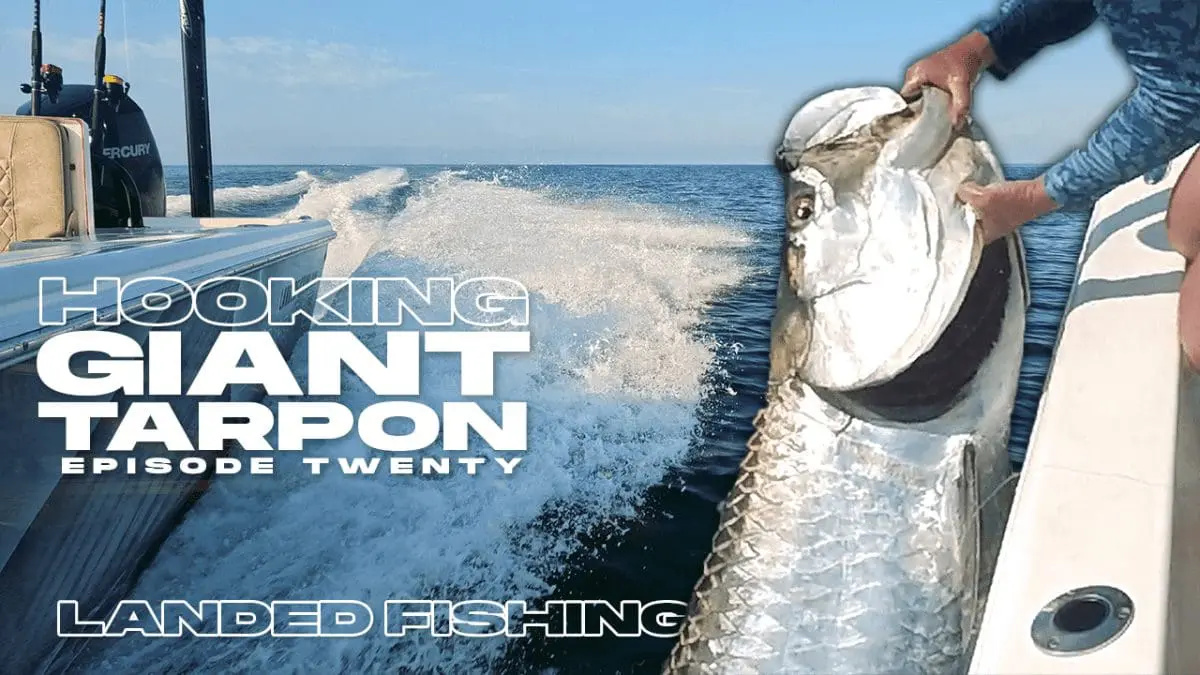Today, tarpon fishing remains a popular sport and an important part of Florida’s economy, attracting anglers from around the world.
Watch Video: Catching Giant Tarpon
Tarpon Fishing
A few things you may want to know about the “silver King”
Tarpon fishing is a sport fishing activity that involves targeting the tarpon, a large, silver-colored game fish that is known for its acrobatic jumps and powerful runs.
This style of angling can be done using various techniques such as fly fishing, spin fishing, live bait fishing, or artificial lure fishing, and requires specialized gear such as rods, reels, lines, and leaders.
Tarpon fishing is popular in locations such as Florida, Louisiana, Texas, and Mexico, and has a seasonality that varies depending on the location.
Tarpon Fishing Gear
Tarpon fishing requires specialized gear to handle the power and size of these fish. The gear includes a rod and reel, lines and leaders, hooks and baits, and other equipment. Tarpon fishing rods are typically 7 to 8 feet long and made of strong, lightweight materials like graphite. Reels should have a high line capacity and a smooth drag system.
Fishing Line for Tarpon
Monofilament or braided line with a pound-test rating ranging from 80 to 150 pounds or even higher, depending on the size of the tarpon in the area you’re fishing.
Tarpon Fishing Hooks
Hooks should be sharp and strong, with circle hooks preferred for catch and release.
The Best Tarpon Bait
Bait options include live bait like mullet or artificial lures like plugs or jigs.
Other essential gear you may want to have on hand are a good pair of fishing pliers and/or gloves
Tarpon fishing rods
A tarpon fishing rod is a specialized fishing rod designed for targeting tarpon, a large and powerful fish species found in coastal waters.
These rods are typically longer and more flexible than other types of fishing rods, allowing anglers to cast large and heavy baits or lures long distances while maintaining good control over the fish.
They also feature strong and durable materials, such as graphite or fiberglass, to handle the powerful jumps and runs of tarpon.
Tarpon fishing rods come in a variety of lengths, power ratings, and action types to suit different fishing techniques, locations, and angler preferences.
When fishing for tarpon, it is important to have a reel that is strong enough to handle the fight and a fishing line that is abrasion-resistant.
Fishing reel with high line capacity and smooth drag
When fishing for tarpon, it’s important to have a reel with a high line capacity and a smooth drag system. This will enable you to effectively handle the power and speed of these large fish. Look for a reel that is specifically designed for saltwater fishing, with a strong and durable construction.
Reels with sealed bearings and anti-corrosion materials will also help to prolong the lifespan of your reel. Finally, consider the size and weight of the reel, as well as its compatibility with your chosen rod, to ensure a balanced and comfortable setup for a successful tarpon fishing experience.
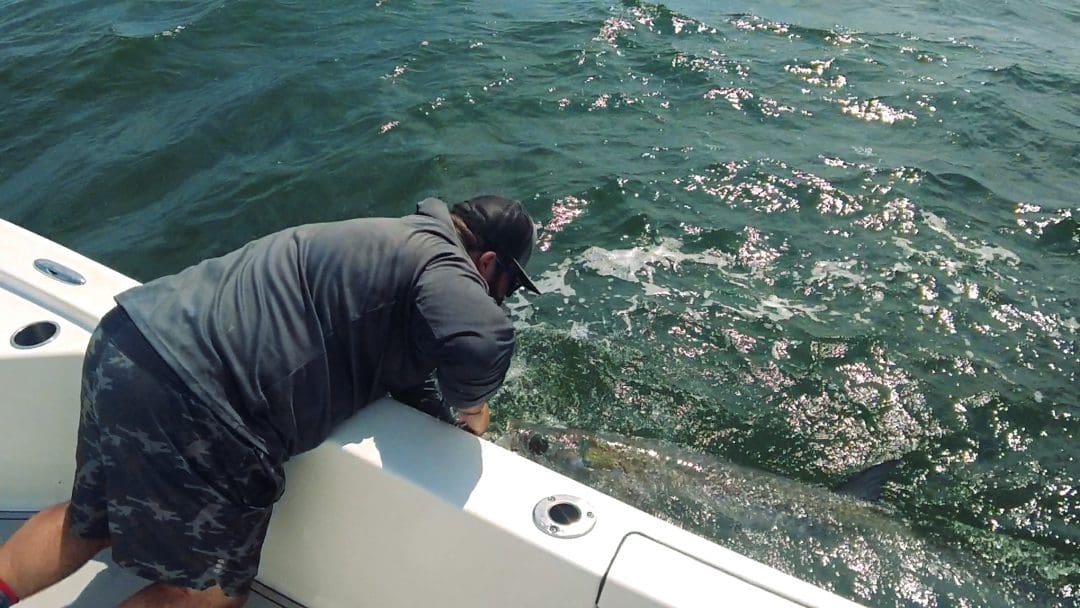
Tarpon Fishing Requires Strong and Abrasion-Resistant Fishing Line
A reel with a high drag system and a large spool can help you land the tarpon. Additionally, a braided fishing line with a high test strength and abrasion resistance is recommended. This will prevent the line from breaking when the tarpon rubs against structures in the water.
Fishing Line for Tarpon
Investing in a strong reel and high-quality fishing line can make a big difference when tarpon fishing.
Long and sturdy leader material for Tarpon
Long and sturdy leader material is essential when targeting tarpon. Tarpon have rough mouths and abrasive scales, so a strong leader material is necessary to prevent break-offs during the fight. A typical tarpon leader should be at least 6-7 feet long, with a breaking strength of 80-100 pounds.
Fluorocarbon is a popular choice for tarpon leaders due to its abrasion resistance and low visibility in the water. Monofilament can also be used but may require a thicker diameter to achieve the necessary strength. It is important to regularly check leader material for any signs of wear or damage, as a compromised leader can result in a lost fish.
Sharp and Strong Hooks, including circle hooks
Sharp and strong hooks are important for tarpon fishing. Circle hooks, in particular, are becoming increasingly popular due to their ability to reduce deep hooking and increase the chances of a successful catch-and-release.
These hooks work by setting themselves in the corner of the fish’s mouth, rather than in the gut or throat, reducing the risk of injury to the fish.
It is important to select the appropriate hook size and strength for the size and weight of the tarpon being targeted, and to use hooks made from high-quality materials to ensure durability and reliability. A well-maintained and appropriately sized hook can make all the difference in successfully hooking and landing a tarpon.
Best Baits for Tarpon Fishing
Live bait or artificial lures
When it comes to tarpon fishing, both live bait and artificial lures can be effective, but each has its advantages and disadvantages. Live bait, such as mullet or crab, can be enticing to tarpon and increase the chances of a strike, but it requires more effort and time to catch and keep alive.
On the other hand, artificial lures can be easier to use and come in a variety of styles and colors to mimic the tarpon’s natural prey.
Ultimately, the choice between live bait or artificial lures comes down to personal preference and fishing conditions. Experienced tarpon anglers often recommend having both options available to adapt to changing fishing conditions.
Tarpon Fishing Gloves
Gloves can also be used and a helpful accessory for tarpon fishing and other saltwater fishing. They can protect your hands from cuts and other injuries while handling fish, particularly if you are using braided line or dealing with large fish like tarpon.
When choosing saltwater fishing gloves, look for options that offer good grip and dexterity so you can still handle your gear and bait effectively. A solid pair of gloves can be a useful addition to your fishing gear, particularly for those targeting larger fish species.
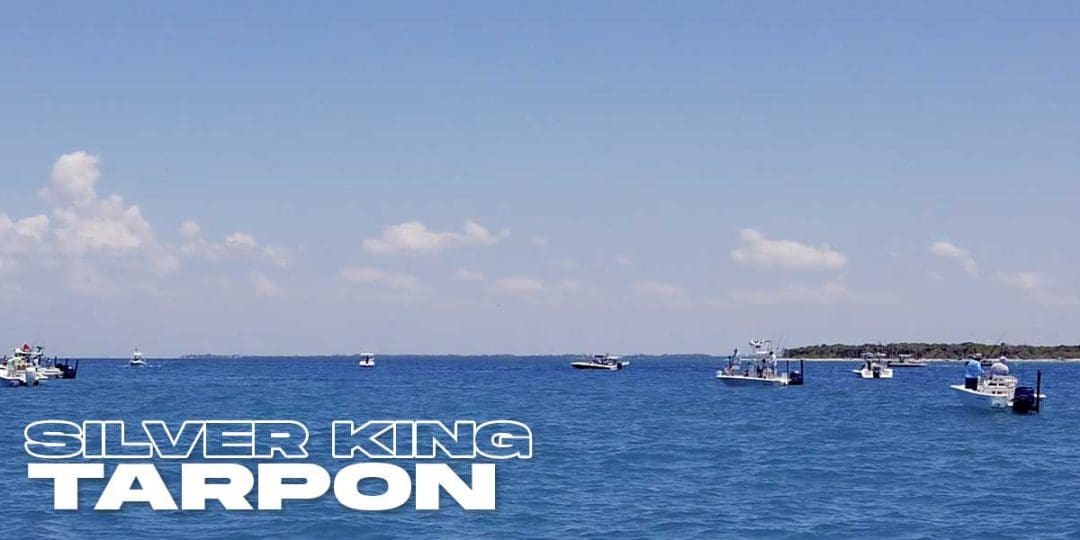
Tarpon Fishing Gear & Tackle
Tarpon Rods and Reels
To catch tarpon, anglers need a sturdy and flexible rod with a fast action tip, capable of handling the weight and strength of the fish. The ideal reel should have a large spool capacity, a smooth drag system, and high line retrieval rates.
Anglers can choose from different types of rods and reels, including spinning, conventional, and fly fishing gear, depending on their skill level, preference, and fishing location.
Fishing Lines and Leaders for Tarpon
When selecting a line, it is important to consider the strength and weight capacity, as well as the diameter, color, and visibility. Fluorocarbon leaders are commonly used because of their abrasion resistance and low visibility. Leaders should be matched to the line strength and the size of the tarpon being targeted.
The length of the leader can also impact the success of the fishing, with longer leaders providing more stealth and shorter leaders providing more control. Properly selecting and rigging lines and leaders can greatly increase the chances of success in tarpon fishing.
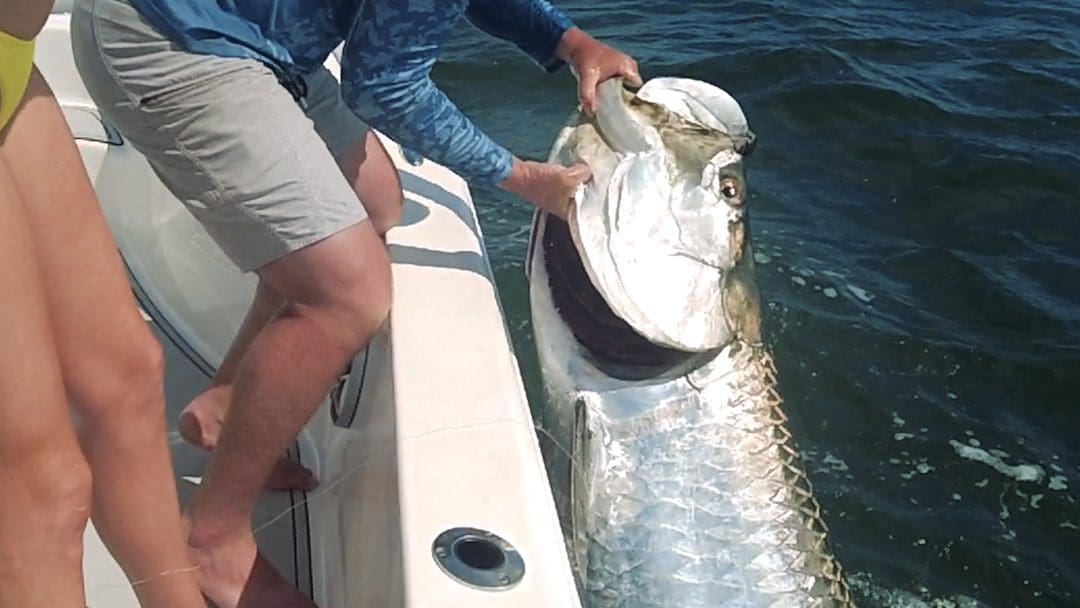
Hooks and Baits for Tarpon
Hooks and baits are essential components for successful tarpon fishing. For tarpon, hooks must be strong and sharp, with sizes ranging from 3/0 to 7/0 depending on the size of the bait being used. Popular baits for tarpon include live mullet, crabs, shrimp, and sardines.
Try to match the bait size to the hook size to ensure proper hooking and minimize injury to the fish. Artificial lures, such as topwater plugs and soft plastic jigs, can also be effective.
When selecting baits for Tarpon, consider the water temperature, time of year, and location to increase the chances of a successful catch.
Techniques for Tarpon Fishing
Fly fishing for Tarpon
Fly fishing for tarpon is an exhilarating experience that requires skill, patience, and the right equipment. Tarpon are powerful gamefish that can grow up to 8 feet long and weigh over 280 pounds. When fly fishing for tarpon, it’s essential to have a sturdy rod and reel, a high-quality fly line, and a selection of flies that mimic the fish’s natural prey.
The most effective technique is to cast the fly in front of the fish and allow it to sink before slowly retrieving it. When a tarpon takes the fly, anglers must set the hook quickly and be prepared for a challenging fight.
Fly fishing for tarpon is popular in locations such as Florida, where the fish can be found in coastal waters and estuaries from April to September.

Spinning Rods for Tarpon
Using a spinning rod is a common fishing method for tarpon and is an incredible experience for anglers of all skill levels.
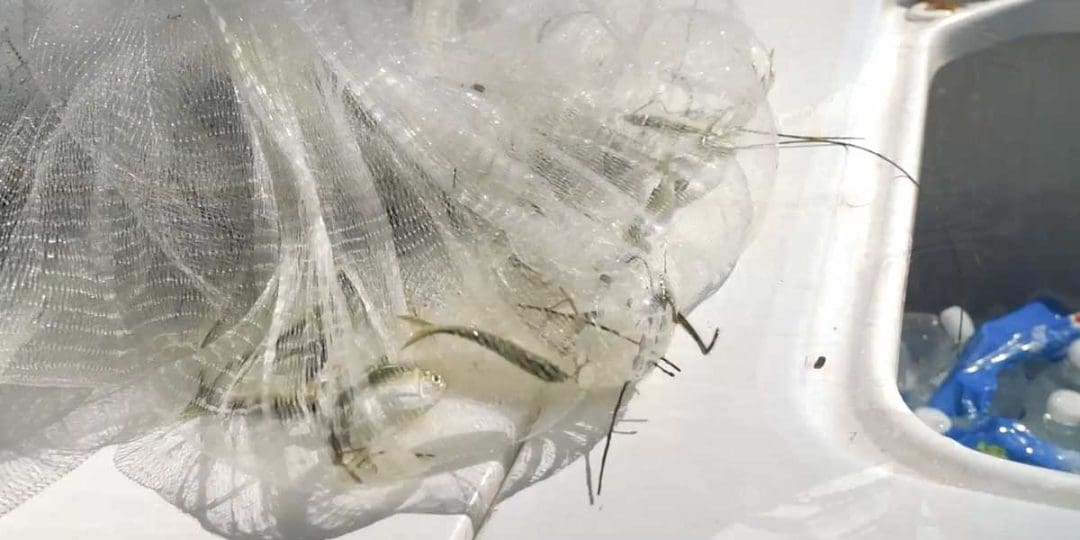
Live Bait for Tarpon
Live bait fishing is a popular technique for catching tarpon. The key to success with live bait is choosing the right bait and presenting it properly.
Common bait options include mullet, pinfish, and crabs. It is important to use the right tackle and rigging, as tarpon are powerful fish that can break weak lines or snap poorly tied knots.
Live bait is often fished near structure such as bridges or docks, or in areas with strong tidal flows. Patience and persistence are key, as tarpon can be elusive and require a delicate touch to hook and land.
Live bait fishing for tarpon requires skill and preparation, but can result in a thrilling and rewarding fishing experience.
Catching “Pass Crabs” for Tarpon Fishing
“Pass crabs” refer to blue crabs that are found in the tidal passes and channels of coastal areas. They are named “pass crabs” because they migrate through these passes during certain times of the year. These crabs are a popular bait for tarpon fishing due to their abundance and attractiveness to tarpon.
To catch pass crabs for tarpon fishing, use a dip net during the outgoing tide and handle them gently to avoid injury. Keep them cool and moist to prevent stress and dehydration. Use fresh pass crabs as bait to attract tarpon.
When it comes to catching pass crabs for tarpon fishing, here are some things to keep in mind:
Timing is key. The best time to catch pass crabs is during the outgoing tide, as the crabs are more active and easier to catch.
Use a dip net. A dip net is a great tool for catching pass crabs. Look for areas with shallow water and seagrass beds, and gently scoop up the crabs.
Handle with care. Pass crabs are delicate creatures, so handle them gently to avoid injuring or killing them. Use a soft mesh net to prevent damage to their legs and claws.
Keep them cool and moist. Pass crabs can quickly become stressed and dehydrated, so it’s important to keep them cool and moist while in transit. Store them in a cooler with a damp towel or newspaper.
Use fresh bait. Tarpon are picky eaters, so it’s important to use fresh pass crabs as bait. Make sure the crabs are alive and kicking before using them on your hook.
Artificial Fishing Lures for Tarpon
Artificial lure fishing for tarpon is a popular technique among anglers who enjoy the challenge of catching these elusive fish. This method involves using lures such as plugs, jigs, and spoons that imitate the movements and appearance of natural prey.
When fishing for tarpon with artificial lures, it is important to consider factors such as water depth, current, and the behavior of the fish. Effective casting techniques and proper retrieval speed are also critical for success. Anglers should be prepared to make quick and accurate casts to entice tarpon to strike.
With patience, skill, and the right equipment, artificial lure fishing for tarpon can be a rewarding and exciting experience for any angler.
Fishing Locations for Tarpon
Florida Tarpon Fishing
Florida has some of the best tarpon fishing in the world, with prime locations including the Florida Keys, Boca Grande Pass, and Tampa Bay. Tarpon can be caught year-round in Florida, but the best time to fish for them is from May to August.
Techniques for tarpon fishing include fly fishing, spin fishing, live bait fishing, and artificial lure fishing.
Best practices for tarpon fishing conservation include catch and release, using circle hooks, and avoiding handling the fish excessively.
Tarpon fishing in Florida offers a unique and thrilling experience for anglers of all levels.
Boca Grande Florida Tarpon Fishing
Boca Grande, Florida is a renowned location for tarpon fishing, with the largest concentration of tarpon in the world during their annual migration from May to July. Live bait is commonly used, and the Boca Grande Pass’s strong currents require heavy tackle and experienced anglers. Tarpon fishing is catch-and-release, and the Boca Grande Tarpon Fishing Tournament is a prestigious event.
Catching Tarpon in Tampa Florida
Tarpon fishing is a popular activity in Tampa, Florida, where anglers can catch these prized game fish known for their acrobatic jumps and fierce fights. The season runs from May to August, and anglers can fish in shallow flats, bridges, and channels. Live bait, artificial lures, and fly fishing are all techniques used to catch tarpon. Many charter companies and fishing guides offer tarpon fishing excursions.
Louisiana Tarpon Fishing
Tarpon fishing in Louisiana is a popular sport among anglers seeking to catch the elusive “Silver King” of the Gulf of Mexico. Tarpon are large, powerful fish that can weigh over 100 pounds and are known for their acrobatic jumps and long, drag-peeling runs.
Louisiana is a prime location for tarpon fishing, with several top spots known for their abundance of these majestic fish. Some of the best locations include the waters off Grand Isle, Venice, and Port Fourchon, as well as the marshes and bayous of Cocodrie and Dulac.
Tarpon fishing in Louisiana typically takes place from May to October, with peak season occurring in July and August. Anglers typically use live bait, such as mullet or menhaden, and fish with heavy tackle and long, sturdy rods to handle the strength of these fish.
Tarpon fishing in Louisiana offers a thrilling experience for anglers looking to catch one of the most sought-after game fish in the world.
Tarpon Fishing in Texas
The prime time to catch tarpon in Texas is from May through September. They are commonly found in the Gulf of Mexico and along the Texas coast, especially near the passes and inlets. The most effective techniques for catching tarpon in Texas include live bait fishing, artificial lure fishing, and fly fishing.
Tarpon fishing gear should be heavy-duty, with a strong rod, reel, and line. Conservation efforts are important in protecting the population of tarpon, and catch and release practices are encouraged.
What time of Year to Catch Florida Tarpon
Spring fishing for Tarpon
Spring is an excellent time for tarpon fishing, as these large and powerful fish migrate along the coasts of Florida, Louisiana, and Texas. During this season, anglers can target tarpon with a variety of techniques, including live bait fishing, artificial lure fishing, and fly fishing.
When fishing for tarpon in the spring, it’s essential to pay attention to water temperature, current, and wind direction, as these factors can affect the fish’s behavior and location. Additionally, it’s important to use appropriate gear, including strong rods and reels, lines and leaders, and hooks and baits.
Summer fishing for Tarpon
Summer is the prime time for tarpon fishing, as these large, hard-fighting fish migrate to warmer waters. In summer, tarpon can be found in a variety of locations, including flats, passes, and channels. Anglers typically use live bait, artificial lures, or fly fishing techniques to target tarpon during this season.
Successful tarpon fishing in summer requires proper equipment, knowledge of the fish’s behavior, and the ability to adapt to changing conditions. However, it is important for anglers to practice responsible catch and release techniques to help preserve the tarpon population.
Summer is an exciting time for tarpon fishing enthusiasts who seek the thrill of catching these majestic fish.
Fall Fishing for Tarpon
Fall is a great time for tarpon fishing as they migrate from their summer feeding grounds towards warmer waters. During this time, tarpon can be found in various locations such as passes, channels, and river mouths.
Live bait and artificial lures such as jigs and plugs are effective in catching tarpon in the fall. Anglers should also consider the tides and weather patterns when planning their fishing trips.
Winter fishing for Tarpon
Winter fishing for Tarpon can be a challenging and rewarding experience for anglers. During this time, Tarpon migrate to warmer waters in southern Florida and the Florida Keys, providing opportunities for catch-and-release fishing.
The best time for winter Tarpon fishing is from December to February, and the most effective techniques include live bait fishing and fly fishing. Anglers should be prepared with appropriate gear, such as heavy rods and reels, and use patience and skill to fight these powerful fish.
It’s important to practice proper catch-and-release methods to ensure the survival of the fish and the sustainability of the fishery.
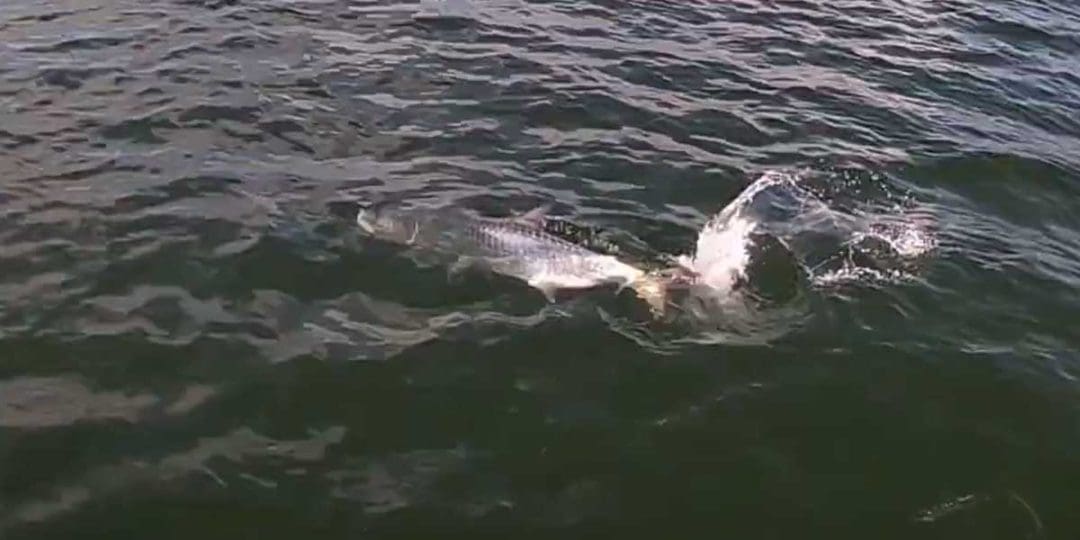
When to Fish for Tarpon
| Month | Gulf of Mexico |
|---|---|
| Good | April, May, June |
| Better | July, August |
| Best | September, October |
Tarpon Fishing Tips and Tricks
Reading the Water when Tarpon Fishing
Reading the water is an important skill for tarpon fishing that involves observing and understanding the different elements of the water. This includes identifying the presence of baitfish, looking for signs of current or tide changes, and searching for structures or cover where tarpon may be hiding.
Factors such as water clarity and temperature can also affect tarpon behavior and should be taken into consideration when reading the water. By developing this skill, anglers can increase their chances of finding and catching tarpon in different fishing locations.
Boat Positioning for Tarpon
Boat positioning is an important element in successful tarpon fishing. When positioning the boat, it is important to consider the wind, tide, and structure of the water. The boat should be positioned upwind and up-current from the tarpon to allow for a natural presentation of the bait or lure.
Anglers should try to position the boat close to structure, such as bridges or docks, where tarpon tend to congregate. Finally, it is important to maintain a safe distance from other boats and to be mindful of the impact of the boat’s wake on nearby wildlife. Proper boat positioning can increase the chances of a successful tarpon fishing experience while minimizing potential harm to the ecosystem.
Casting Techniques for Tarpon
Casting techniques can play a large role in the aspect of tarpon fishing, as accurate and efficient casting can significantly increase the chances of hooking a tarpon. Some casting techniques commonly used in tarpon fishing include the double haul, the roll cast, and the sidearm cast.
Proper casting technique involves proper body positioning, timing, and the ability to adapt to changing wind and water conditions. Experienced tarpon anglers recommend practicing casting techniques before going on a fishing trip and being prepared to adjust their approach as conditions change throughout the day.
Fighting the Silver King (Tarpon)
Tarpons are known for their high-speed runs and acrobatic leaps when hooked, making them a challenging and exciting game fish to catch. To successfully fight a tarpon, anglers need to have proper gear, use proper techniques, and be patient and persistent.
Reading the water, positioning the boat, and using appropriate casting techniques are critical in fighting the fish. Anglers must also be careful not to exhaust the fish too much, as tarpons are a fragile species. Catch and release practices should be observed to ensure the conservation of this magnificent game fish.
Tarpon Fishing Conservation
Tarpon populations have declined due to overfishing, habitat loss, and environmental factors. Conservation efforts include promoting catch and release practices, reducing bycatch, protecting tarpon habitats, and advocating for responsible fishing regulations.
Anglers can play a significant role in tarpon conservation by following guidelines for ethical fishing practices and reporting any instances of illegal fishing or poaching. By supporting tarpon conservation efforts, we can help ensure the sustainability of this iconic game fish for generations to come.
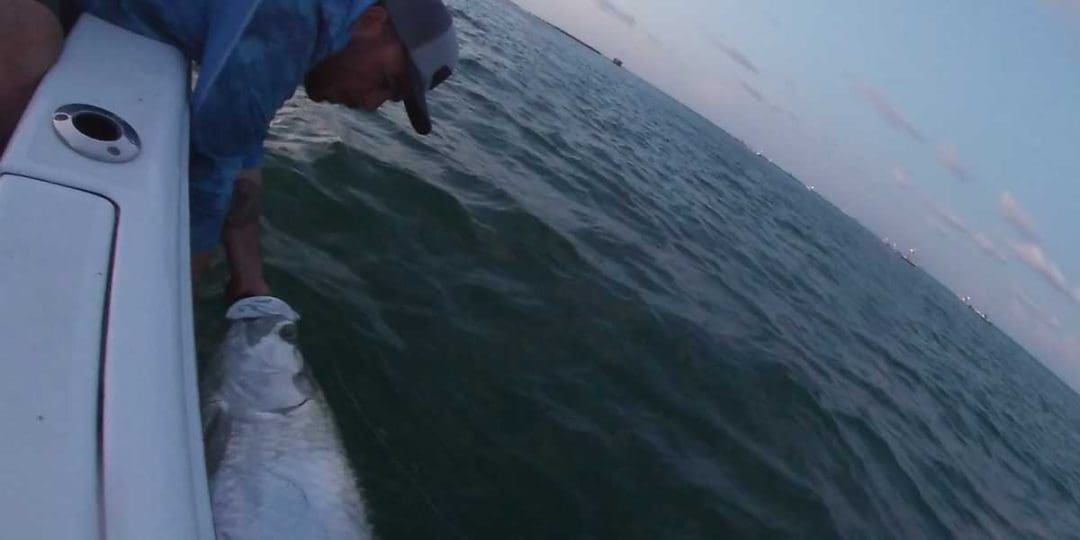
Tarpon Conservation Issues
Tarpon, also known as the “Silver King,” are highly sought-after game fish known for their impressive size and acrobatic leaps. However, as with many species of fish, tarpon populations have faced conservation issues due to various human activities.
Overfishing is a major concern for tarpon conservation, as commercial and recreational fishing pressure can significantly reduce their numbers. Tarpon also face habitat destruction and degradation, such as loss of estuaries and wetlands, which becomes an essential part for Tarpon spawning and juvenile development.
Climate change and pollution are also major threats to tarpon populations. Rising temperatures and changing ocean currents can affect the availability and quality of food sources, while pollution can impact the water quality and harm the health of the fish.
Conservation efforts for tarpon include catch-and-release practices, which help to ensure that individuals are not killed unnecessarily, and the establishment of protected areas and fishing regulations. Research on tarpon behavior and migration patterns is also important for understanding their ecology and developing effective conservation strategies.
Tarpon conservation is important, we must all work together toward preserving this iconic species and maintaining healthy and sustainable marine ecosystems.
Best Practices for Tarpon Fishing Conservation
Handle the tarpon with care. Use proper handling techniques such as wetting your hands before touching the fish and supporting its weight.
- Use circle hooks instead of J-hooks. Circle hooks are less likely to cause injury to the tarpon, and they increase the chances of a successful release.
- Use appropriate tackle. Choose tackle that matches the size of the tarpon you’re targeting. Using heavier tackle than necessary can cause exhaustion and increase the risk of mortality.
- Don’t keep the tarpon out of the water for too long. The longer the tarpon is out of the water, the greater the risk of mortality.
- Release the tarpon quickly and properly. Release the tarpon as soon as possible, and revive it if necessary before releasing it.
- Participate in tarpon research and conservation efforts. Report your tarpon catches to conservation organizations and participate in research studies to help conserve the species.

